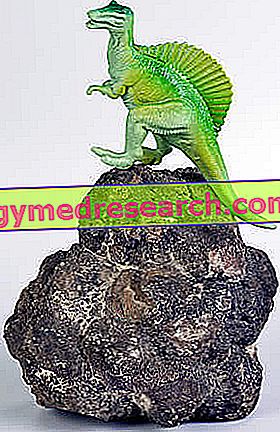Important introduction
Since it is a pharmacological preparation in all respects, chlorhexidine-based mouthwashes must be used correctly, fully respecting the doses prescribed / recommended by the doctor and the duration of the treatment.

Chlorhexidine (0.2%) mouthwashes are widely used in the prevention of dental infections after a dental operation (eg dental extraction, apicectomy) and in the treatment of gingivitis and other types of inflammation in the oral cavity. At lower concentrations, chlorhexidine (0.05%) mouthwashes can be used to combat halitosis, including its pathological form.
While not requiring a medical prescription, the use of chlorhexidine mouthwashes should always be done with the advice of a doctor or an expert on the subject. An excessive dosage of drug (taken in the form of oral rinses) or a duration of therapy unsuitable for one's own disorder could in fact lead to serious risks and side effects.
No effect and common disorders
As we have seen, it is important to know the correct way to use the mouthwash to take advantage of its maximum therapeutic effectiveness, avoiding unpleasant side effects.
Although it is the duty of the physician to educate the patient on the ideal way of using the drug, we briefly recall the main guidelines.
First of all, it is necessary to know that chlorhexidine is sensitive to some ingredients commonly found in the preparation of dentifrices (sodium lauryl sulfate and sodium monofluorophosphate). Having said this, it is understood that the concomitant use of generic dentifrices and chlorhexidine mouthwash could alter or, worse, make the therapeutic effect of the drug invalid. To avoid nullifying the cure, it is advisable to use a toothbrush and toothpaste only 30 minutes / two hours after rinsing with the medicated mouthwash (alternatively, use toothpaste compatible to combine anti-plaque solutions with chlorhexidine).
Moreover, to avoid damaging the color of the dental enamel, rinses with chlorhexidine mouthwash should not be performed more than twice during the 24 hours: for this purpose, we recommend a gargle in the morning, after breakfast, and one at evening before night rest.
Another very important element is the use of the mouthwash. After a dental operation, rinses with mouthwash should always be performed with a certain delicacy, to avoid ripping the stitches. Otherwise, in case of gingivitis, rinsing should be more energetic.
Stains on the teeth
When used in the right doses and adequately, the chlorhexidine mouthwash does not create any damage. Often, however, patients tend to abuse the drug, in the mistaken belief that "mouthwash does not hurt because it should not be ingested". In reality, when used regularly more than twice a day and for a period longer than 3 consecutive weeks, the medicated mouthwash can create unpleasant stains in the teeth: in particular, such behavior tends to alter the natural color of tooth capsules and resins used for dental fillings, which tend to take on a variable shade from yellow to black.
Although not harmful to the integrity of the tooth, these spots are clearly very unsightly, and give the smile an unpleasant and unhealthy appearance. In this case, the alteration of the tooth color is essentially due to a hyperpigmentation of tartar and bacterial plaque stuck to the surface of the teeth.
The only solution to remove stains from the teeth is professional dental cleaning: through scaling the teeth can become shiny and shiny again.
To minimize the risk of yellow or black-stained teeth, new pharmacological formulations containing chlorhexidine and other specific ingredients have been designed, specifically selected to avoid staining the teeth.
Burning of the oral cavity
Prolonged and exaggerated use of chlorhexidine-based mouthwashes can cause severe burning of the oral cavity, bacterial resistance and inflammation of the mucous membranes. In such situations, the advice is to immediately contact your dentist to intervene as soon as possible in resolving the problem.
Normally, when chlorhexidine mouthwashes cause a strong burning sensation in the mucous membranes of the oral cavity, the most appropriate remedy is to stop the treatment immediately, and to apply on the irritated gums a specific paste formulated with soothing and healing substances (eg aloe) and tissue regenerating (ex. . hyaluronic acid).
Taste alteration
It is not uncommon that, after a gargle with chlorhexidine mouthwash, the perception of food taste is distorted or reduced. This side effect, technically known as dysgeusia, is quite common in patients using this drug. However, by interrupting the treatment with chlorhexidine mouthwash, the perception of food taste will soon be restored.



